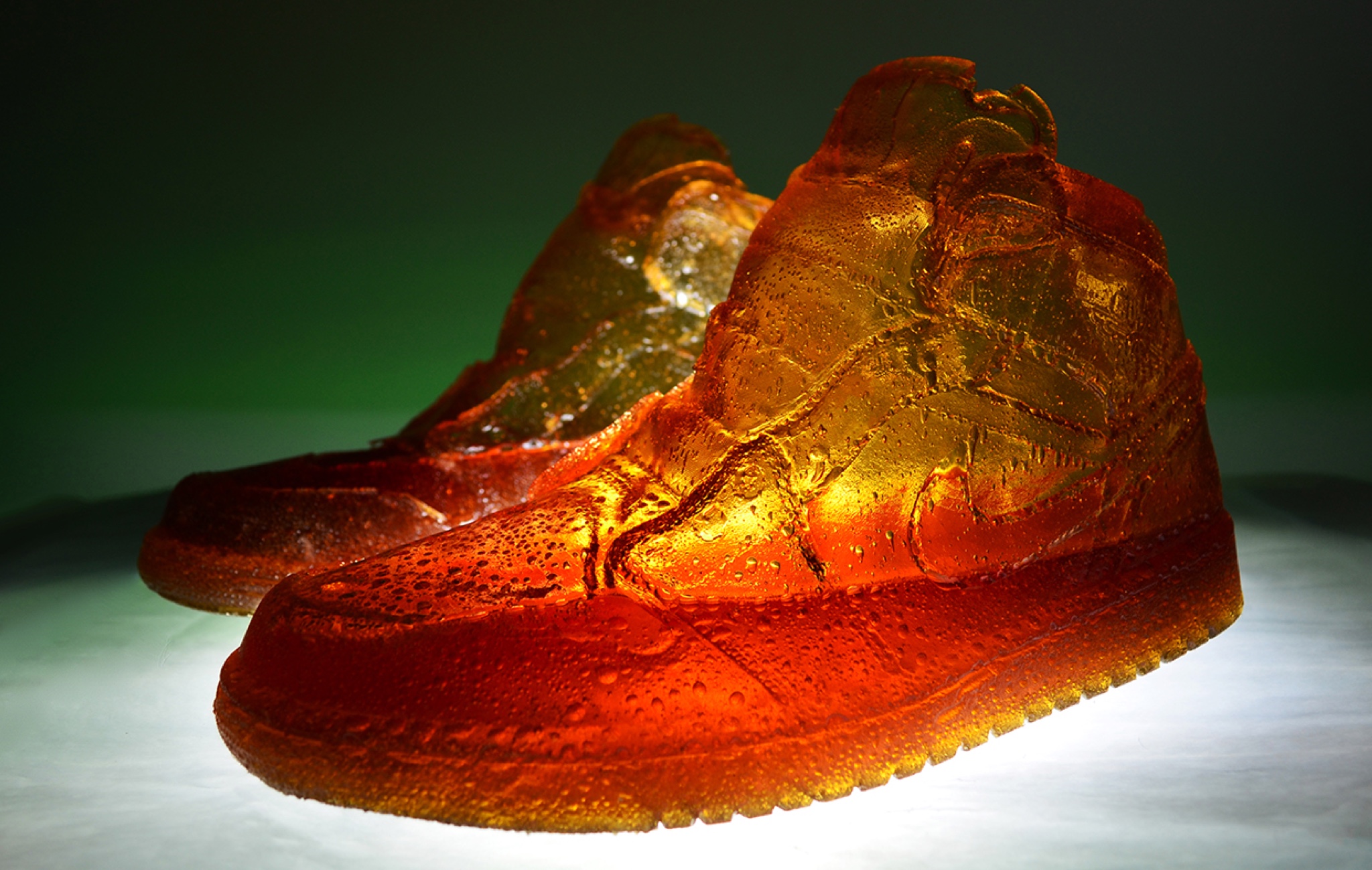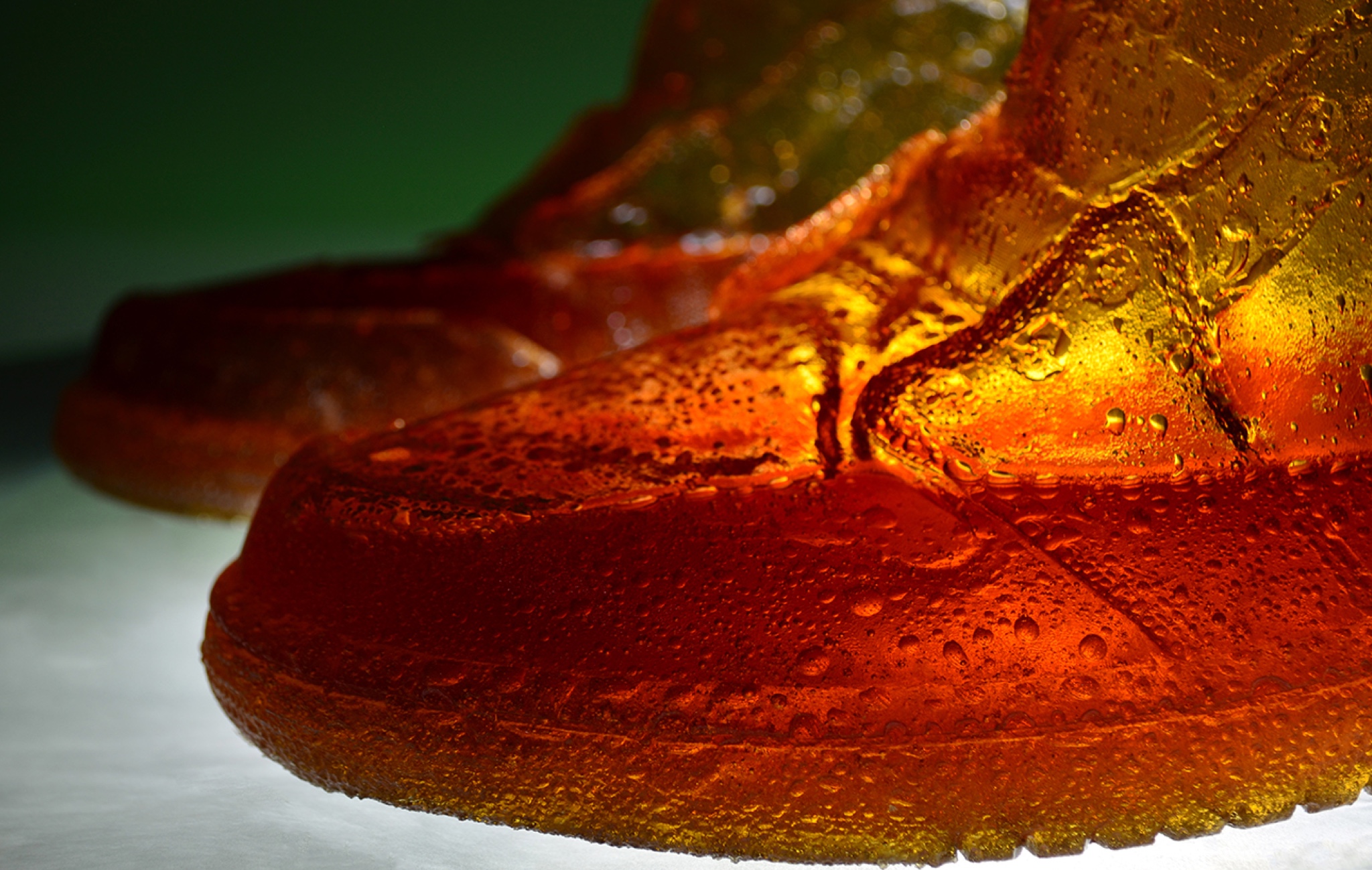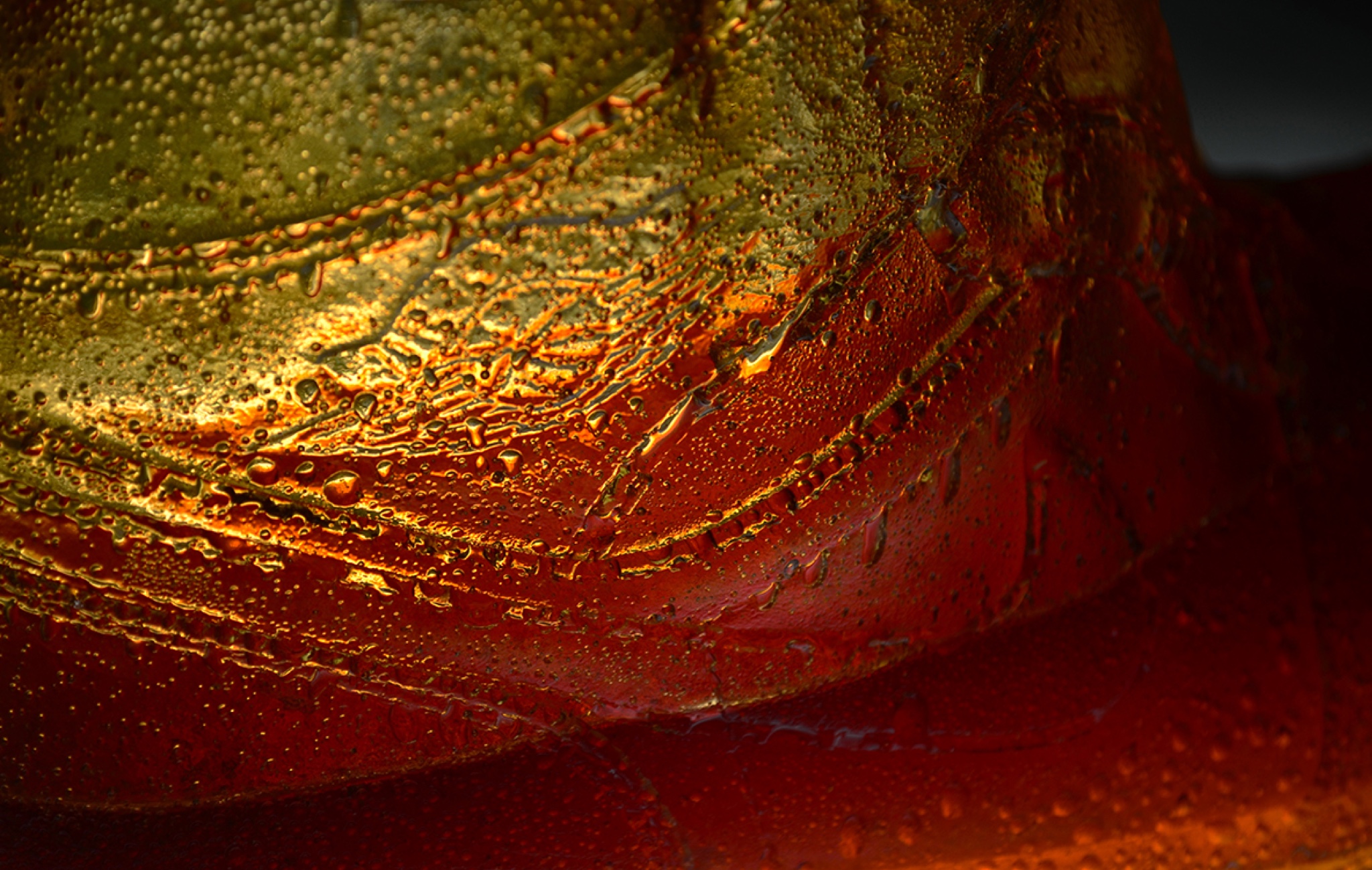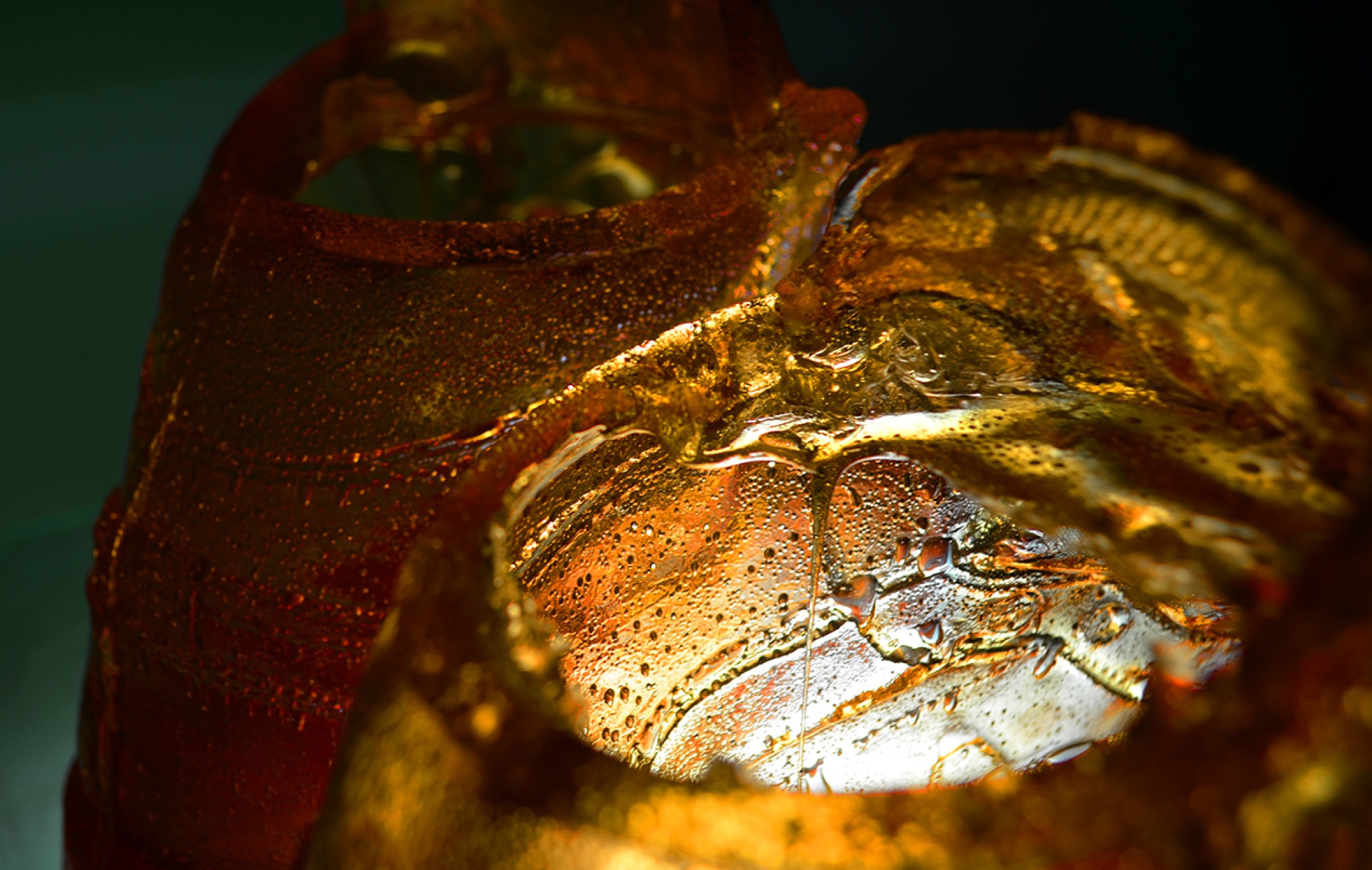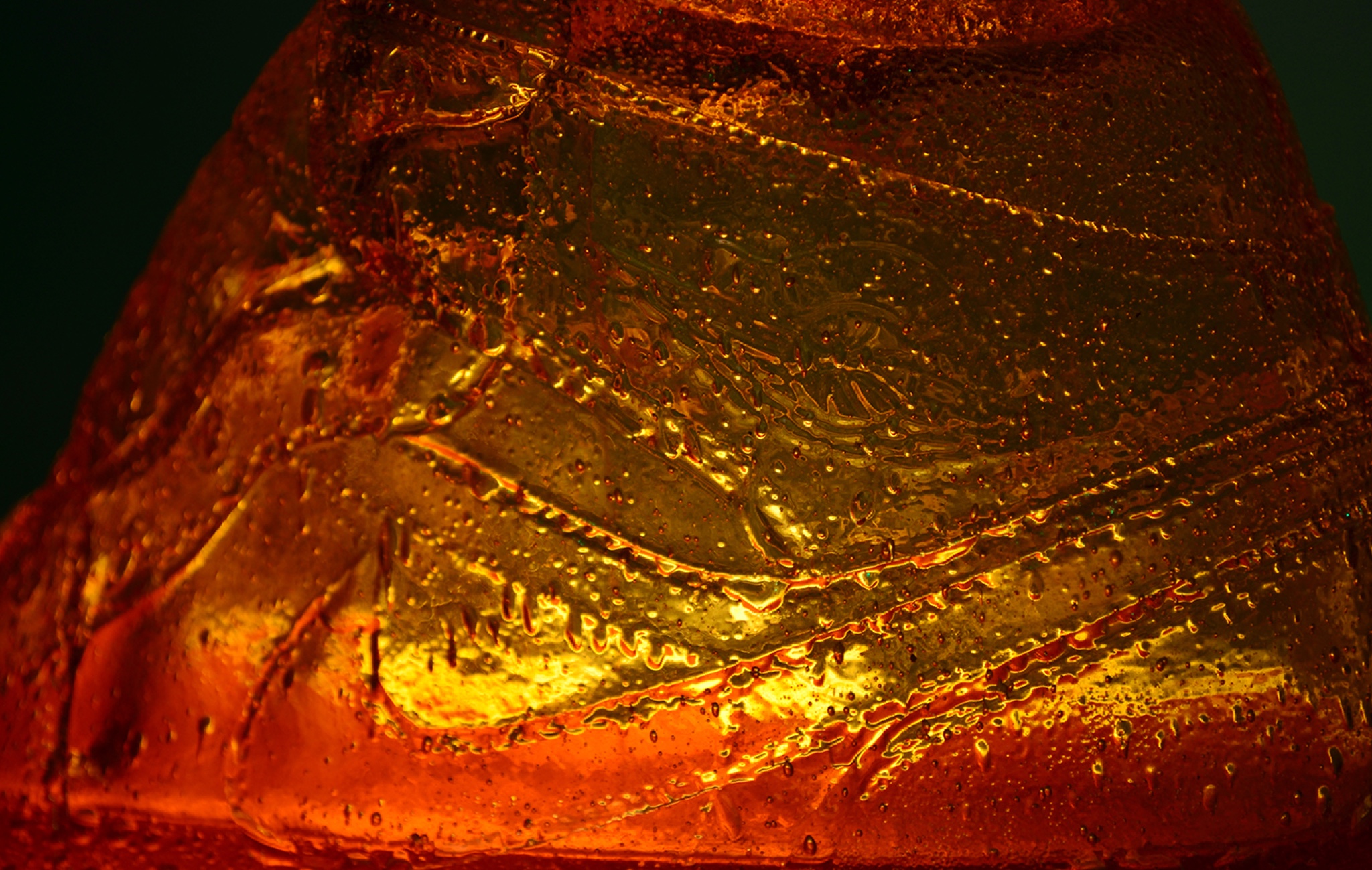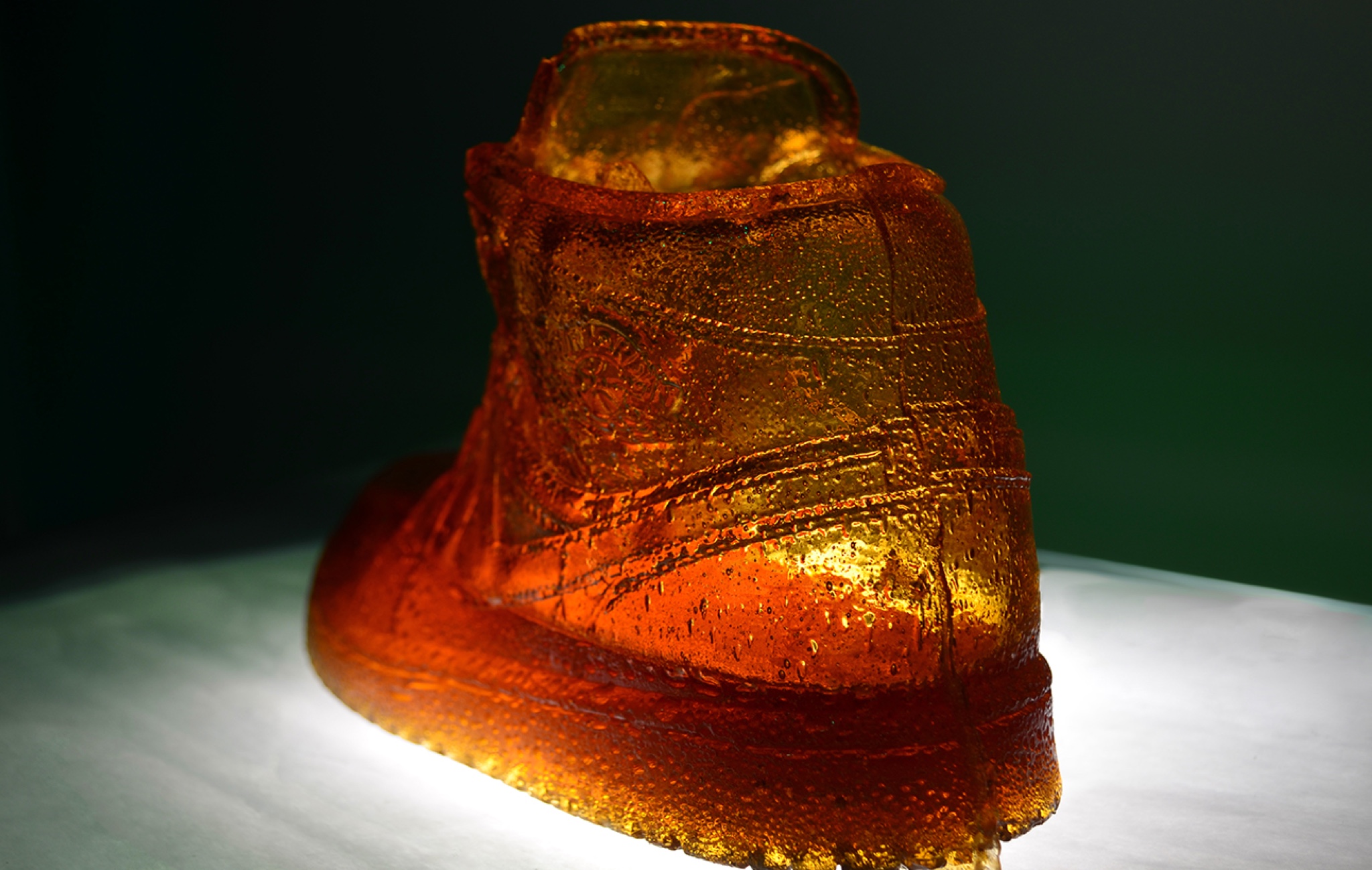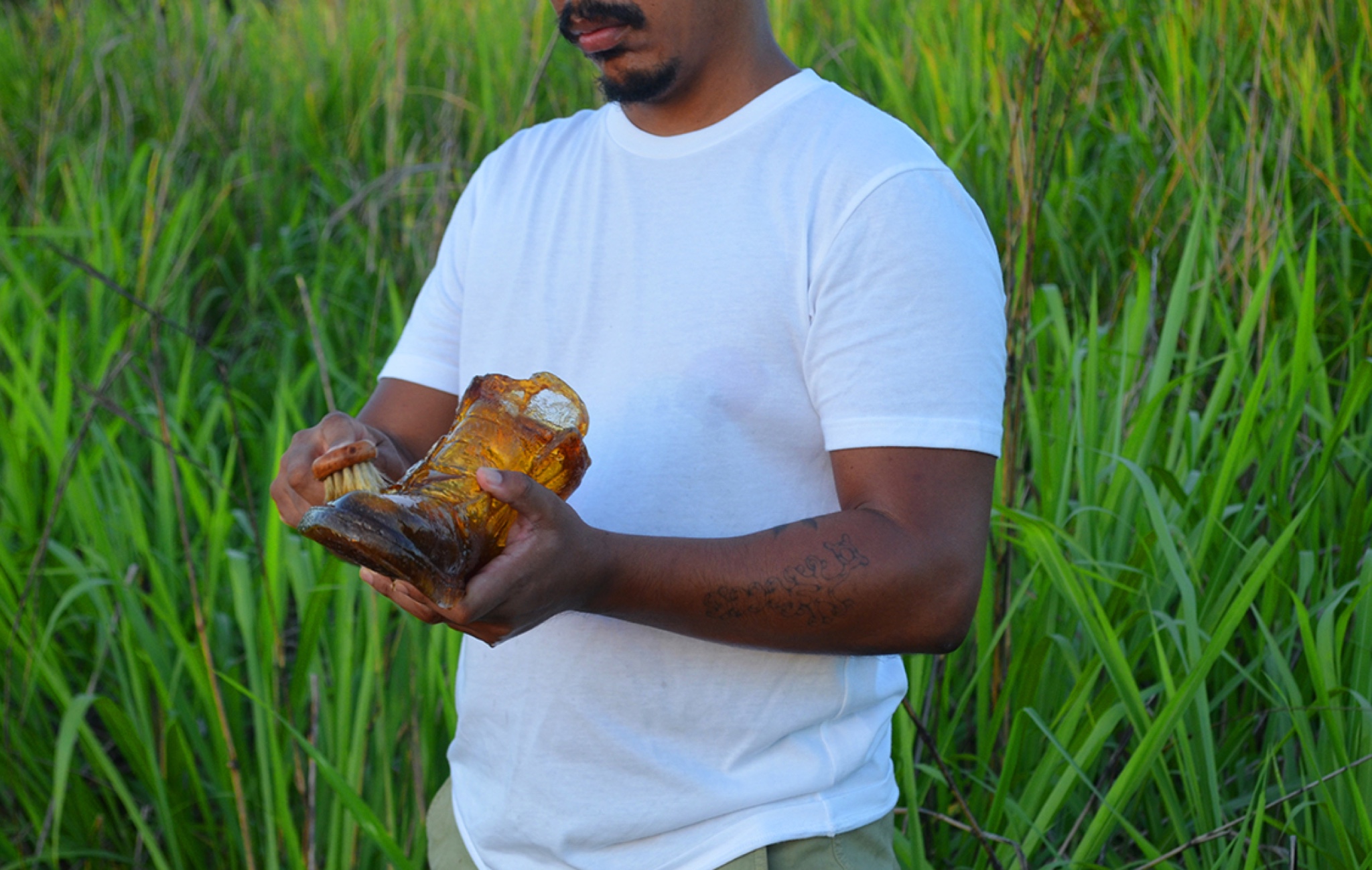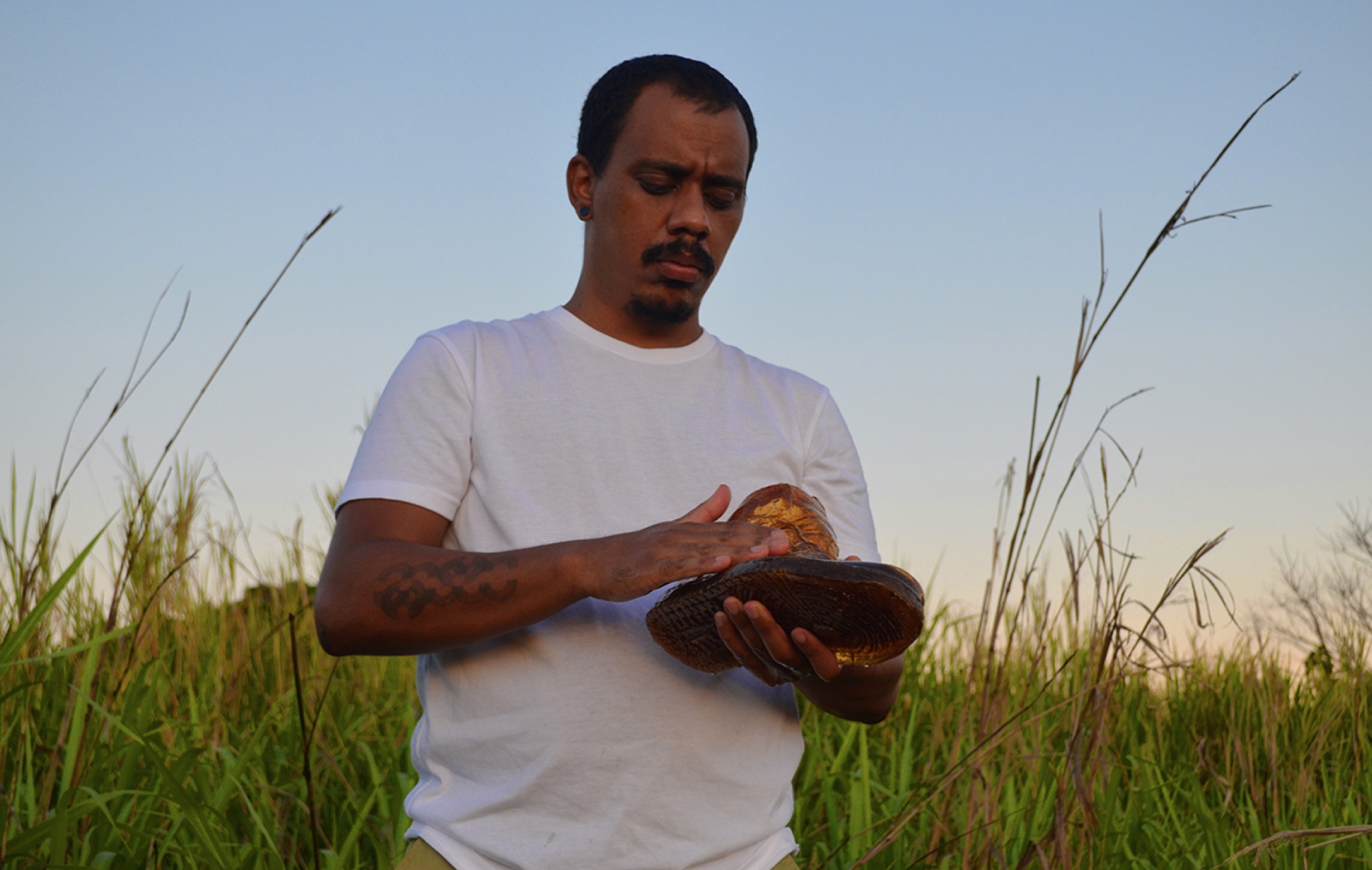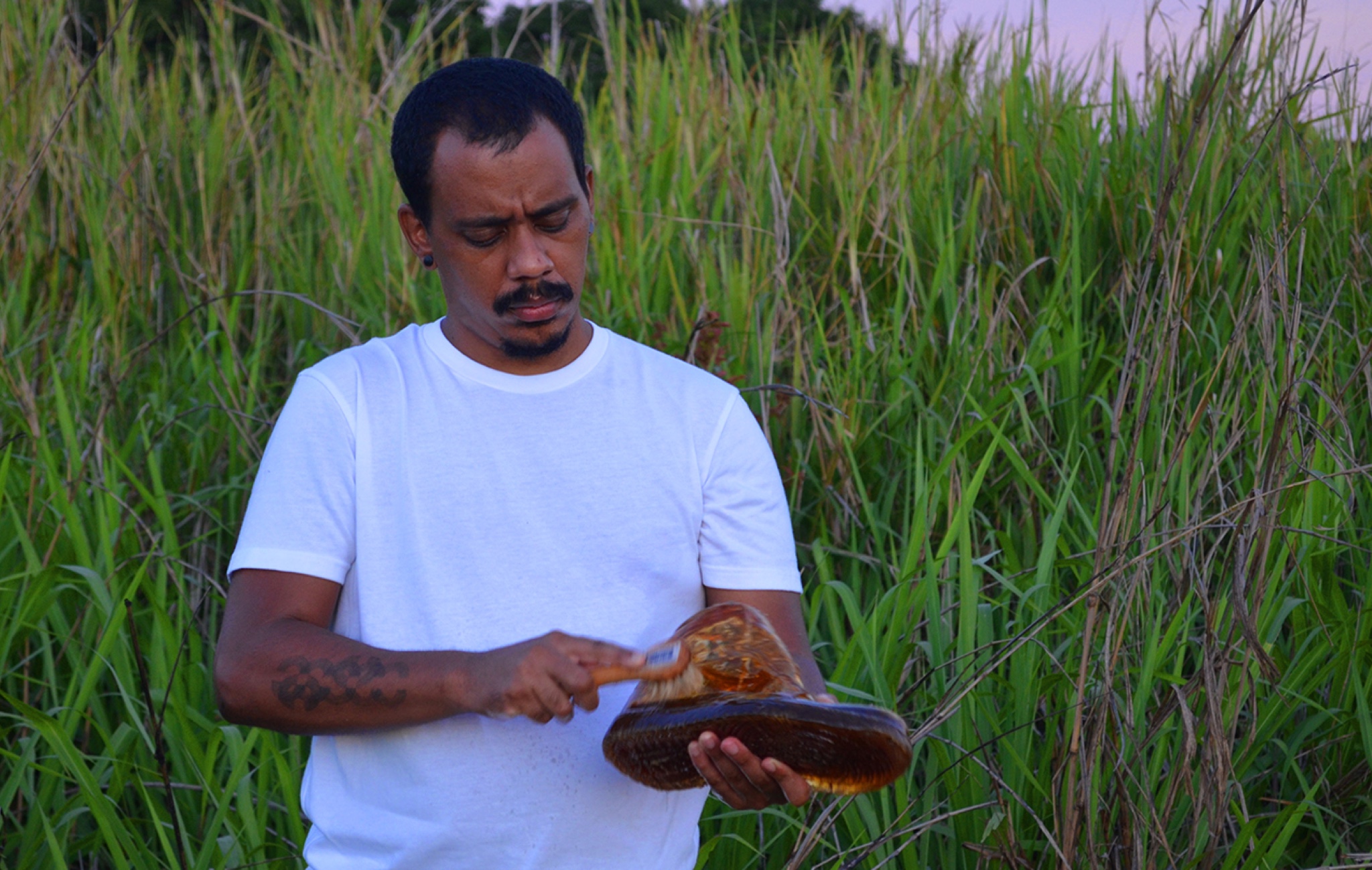Luis Vasquez La Roche
But the real ones, just like you, just like me (2021)
But the real ones, just like you, just like me, is the first part of three performances, which take place in a sugar cane field in Couva, Trinidad. In the performance, I “clean” a sugar cast pair of Air Jordan 1’s. I scrub with a brush and rub with my hands until the shoe dissolves. As it melts, certain parts of the shoe get sharper, and it cuts my hands as I try to “rub it clean”. No longer does the shoe get “cleaned” with just a brush and water; it is also being “cleaned” with blood.
Not too far away from where the performance took place, there is housing developments, schools and recreational spaces. There is an abandoned sugar factory called Brechin Castle, which has been closed and empty since 2003. Nearby, there is also a school and a golf course. Across, there is sugar cane, houses, a cricket/soccer field and a basketball court. What does it mean for some of these areas to become housing developments, soccer fields, or recreation areas?
I layer the AJ1’s and sugar to reference different periods of exploitation and profiteering off of Black people. Trinidad was a Spanish colony from the late 1400s to the early 1800s, when we became a British Colony. “The crop one found here was not sugar, but cotton.”1 Enslaved Africans and indentured workers of Indian descent worked in these sugar plantations. In 1937, these sugar estates eventually became Caroni Ltd (Brechin Castle). The sugar industry in Trinidad finally collapsed in the early 2000s.
The branding behind Air Jordans and Michael Jordan was one of the few representations of successful Black men for me while growing in Venezuela. On the other hand, it also became a synonym of being a Mono or Macaco.2 In other countries like Chile, they would use the word Flaite, which derives from the counterfeit version called Flight Air.3 The AJ1’s is such an iconic item within Black culture —utilising the success of Black athletes as a marketing strategy to sell it to its primary consumer, the black community. With this performance, I try to establish a link between the material and the object and the new ways in which capitalism has managed to exploit Black folks.
I stand in this cane field where my enslaved ancestors were forced to work the land, with this counterfeit version of AJ1’s, giving the sugar back to the soil. Making it disappear, but it costs me my blood.
Since I found the Slave Registry of Trinidad and Tobago, I have taken an interest in archival documents and images that relate to the Transatlantic Slave Trade. I became interested in aspects that repeat themselves in varying ways in the present. Aspects such as labor, death, erasure, oppression, violence, and discrimination are profoundly present. Even though the slave trade managed to dehumanize millions of Black people, with the consequence of continuing to do so in the present, we can find hope, resistance, and resilience.
An essential part of the research is an inquiry regarding material associated with the history of the slave trade. I employ these materials in my work to articulate aspects of race, identity, culture, politics, and spirituality. Some of my works are installations that require a live component for activation, some works are sculptural, and occasionally these objects become props for a live performance.
2 Mono is the Spanish word for monkey. It is also a colloquial term used by Venezuelans to describe someone of low income or Black. Macaco is the portuguese word for monkey.
3 Flaite means criminal or person of low income. Mendoza Burgos, David Ignacio. Caracterización de la Pobreza como Estereotipo Delictual ( Universidad de Chile, 2016) pag 79.
Specifications
Location: Couva, Trinidad and Tobago
Year: 2021
Object: Hard Crack Sugar – Air Jordan 1’s
Photo Credits: Wendy Vasquez and Luis Vasquez
Pero los de verdad, como tú, como yo es la primera parte de una serie de tres performances, llevadas a cabo en un cañaveral en Couva, Trinidad. En la pieza, “limpio” unas Air Jordan 1’s moldeadas en azúcar. Las restrego con un cepillo y froto mis manos hasta que el zapato se disuelve. Al disolver, ciertas partes del zapato se perfilan y me cortan las manos mientras intento limpiarlo. Ya no se lava solo con el cepillo y el agua; ahora también se limpia con sangre. No muy lejos de donde tuvo lugar el performance, hay unos complejos de vivienda, escuelas y espacios recreacionales. Hay una fábrica de azúcar abandonada llamada Brechin Castle, que lleva cerrada y vacía desde el 2003. Cerca, una escuela y un campo de golf. En frente, hay caña, casas, un campo de fútbol/cricket y una cancha de baloncesto. ¿Qué significa para algunos de estos espacios convertirse en desarrollos de vivienda, campos de fútbol y áreas recreacionales? Contrapongo las AJ1’s y el azúcar para referenciar distintos periodos de explotación y enriquecimiento a costa de gente negra. Trinidad fue una colonia española de fines de los 1400s a principios de los 1800s, cuando nos convertimos en colonia británica. “El cultivo que uno encontraba aquí no era el azúcar, sino el algodón.”1 Africanos esclavizados y coolies trabajan en estas plantaciones. En 1937, las haciendas azucareras se convirtieron en Caroni Ltd (Brechin Castle). La industria del azúcar en Trinidad finalmente colapsó a principios de los años 2000. La identidad de marca de las Air Jordans y de Michael Jordan reflejaba una de las pocas representaciones de hombres negros exitosos que yo veía creciendo en Venezuela. No obstante, también eran sinónimo de ser un mono o un macaco.2En otros países como Chile, usan la palabra flaite, derivada de la versión counterfeit llamada Flight Air.3 Las AJ1s es un objeto tan icónico en la cultura negra – utiliza el éxito de atletas negros como estrategia de mercado para venderlas a su principa consumidor: la comunidad negra. Con esta performance, trato de establecer vínculos entre el material y el objeto y las nuevas maneras en las que el capitalismo explota los negros. Me paro en este cañaveral donde mis ancestros esclavizados fueron forzados a trabajar la tierra, con esta versión counterfeit de las AJ1s, devolviendo el azúcar a la tierra. Haciéndola desaparecer, aunque me cuesta mi sangre. Desde que encontré el Registro de Esclavos de Trinidad y Tobago, me he interesado en los documentos e imágenes de archivo relacionadas con la trata de esclavos transatlántica. Me interesan aspectos que se repiten de varias maneras en el presente. Aspectos como el trabajo, la muerte, las borraduras, la opresión, la violencia y la discriminación están profundamente presentes. Aunque la trata de esclavos logró deshumanizar a millones de negros – con consecuencias que continúan en el presente, podemos encontrar esperanza, resistencia y resiliencia. Una parte esencial de mi investigación es indagar sobre los materiales asociados con la historia de la trata esclavista. Utilizo estos materiales en mis obras para articular nociones de raza, identidad, cultura, política y espiritualidad. Algunas de mis piezas son instalaciones que requieren un componente en vivo para activación, otras son esculturales y ocasionalmente estos objetos se tornan en props para escenificaciones en vivo. Especificaciones
2 Mono, además de significar el animal primate en español, es un término coloquial en Venezuela que describe alguien de pocos recursos o negro. Macaco es la palabra portuguesa para mono.
3 Flaite significa criminal o persona de bajos recursos. Mendoza Burgos, David Ignacio. Caracterización de la pobreza como estereotipo delictual. Universidad de Chile: 2016, p. 79.
Lugar: Couva, Trinidad y Tobago
Año: 2021
Objeto: Azucar “Hard Crack” – Air Jordan 1’s
Créditos de fotografía: Wendy Vasquez y Luis Vasquez
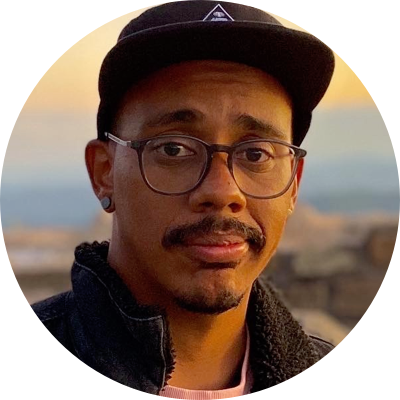
ARTIST:
Luis Vasquez La Roche
Trinidad and Tobago
(b.1983) They hold an MFA from Virginia Commonwealth University. They have exhibited work and performed in institutions such as Field Projects in NY, ICOSA in Austin TX, Denison Art Space in OH, Deakin University in Melbourne Australia, La Vulcanizadora in Bogotá Colombia, MCLA Gallery 51 in MA, Fresh Milk in Barbados, Alice Yard in Trinidad and Tobago, LACE in Los Angeles CA and the Institute of Contemporary Art in Richmond VA.
(n. 1983) Poseen un MFA de la Universidad del Commonwealth de Virginia. Han exhibido y escenificado performancesen instituciones como Field Projects en NY; ICOSA en Austin, TX; Denison Art Space en OH; Universidad de Deakin en Melbourne, Australia; La Vulcanizadora en Bogotá, Colombia, MCLA Gallery 51 en MA; Fresh Milk en Barbados; Alice Yard en Trinidad y Tobado; Lace en Los Ángeles, CA; y el Instituto de Arte Contemporáneo en Richmond, VA.
Awilda Sterling | San Juan, Puerto Rico
Tercera raíz (Third Root)
Carlos Martiel | Havana, Cuba
Oficios de piel curtida
Fabio Melecio Palacios | Palmira, Valle del Cauca, Colombia
Continuum I, Continuum II
Joiri Minaya | Santo Domingo, Dominican Republic / New York, US
The Little Match Girl / The Emperor's New Clothes
La Vaughn Belle | Christiansted, US Virgin Islands
Preparasyon ke mankai fiwa ba la guerra
Las Nietas de Nonó | Carolina, Puerto Rico
In search of lost suns
Leasho Johnson | Kingston, Jamaica
But the real ones, just like you, just like me
Luis Vasquez La Roche | Venezuela / Trinidad
Cuerpo pátina – Cuerpo athanor: Legado de la esclavitud en cuerpos racializados
PERMANENCIAS | Cartagena, Colombia


